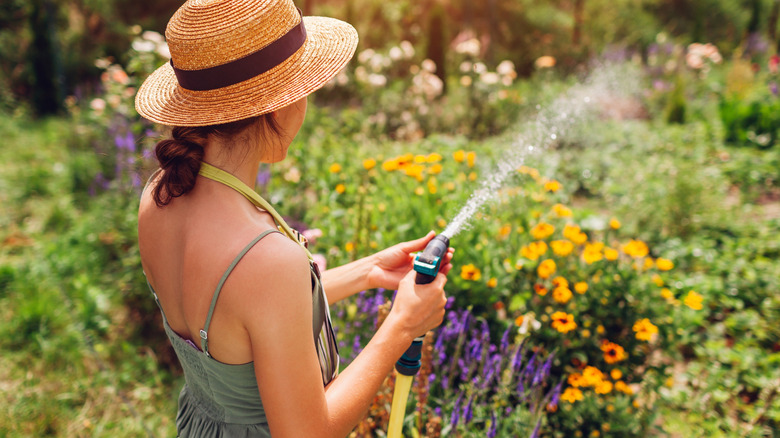Are Wi-Fi-Enabled Soil Moisture Meters Accurate? Here's What We Know
Every gardener knows that watering can be tricky. Some days the soil looks dry on top but feels damp underneath, and other times it seems fine until the leaves start drooping. Many of us believe that plants need to be watered constantly, but that habit often leads to soggy roots and unhappy plants. Overwatering is one of the mistakes to avoid when watering your garden, and if you're uncertain whether your plants need to be watered, a moisture meter could be the solution.
Wi-Fi soil moisture meters are small, smart devices that measure how much water is really in the soil and send the information straight to your phone. But are they accurate? A study published by Environmental Monitoring and Assessment shows that Wi-Fi meters can pick up changes in soil moisture with surprising accuracy, especially when tested under controlled conditions. They could offer an affordable and dependable way to track soil moisture without needing to be perfectly positioned in the dirt. For everyday gardeners and homeowners, this could mean fewer watering mistakes, less guesswork, and healthier, more resilient plants. But there are a few drawbacks that could be improved over time.
Early tests show Wi-Fi sensors can track soil moisture accurately enough for gardeners
Researchers found that Wi-Fi signals change slightly depending on how wet the soil is. The wetter the dirt, the weaker the signal. By keeping track of that change, a sensor can estimate how much water your plants really have around their roots. The Wi-Fi signals can travel surprisingly far through soil, even a few feet down. That means future versions of these devices could check moisture at different depths, not just near the surface. Imagine knowing if your garden bed is dry near the roots but still damp underneath.
Of course, the technology isn't perfect yet. Things like the type of soil, the sensor's placement, and even the quality of the parts can throw off the numbers. But the results are consistent enough to be useful for everyday gardeners. They're best for spotting trends and preventing overwatering, not for precise measurements down to the decimal.
Scientists are solving the accuracy problems holding Wi-Fi soil sensors back
One tricky thing researchers ran into was how the soil's surface can mess with readings. When Wi-Fi signals bounce between the air and the soil, things like uneven ground or a thin layer of water after rain can throw the numbers off. To get around this, scientists have started placing both the signal senders and receivers under the soil's surface instead of above it. That simple change helps cut down on interference and gives a cleaner, more reliable reading. The next steps are to focus on building a fully independent device that can do all this on its own.
This is something gardeners and farmers could actually use in real life. The idea is to test different designs and setups for everything from backyard plots to full-scale fields. But before these gadgets hit the market, researchers still need to run lots more tests in all kinds of soils and weather conditions to make sure they stay accurate and dependable. We're just not quite there yet. But in the future, WiFi sensors could be the best tools for watering your plants accurately.


